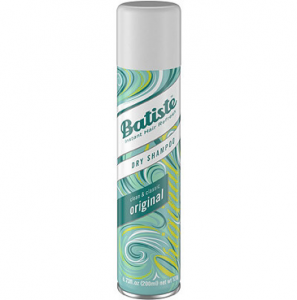As a woman pressured by looks and as a student rushed for time, dry Shampoo is the answer to most of my hair days. Most women get the same question as they sit in a salon “How often do you wash your hair?” It’s as if I’ve lived twenty years and haven’t been asked this question before, and they are going to deliver new wisdom. Presumably, they are asking to sell you their products. With the invention of dry shampoo, I like to go 2-3 days without washing my hair, which is salon recommended by almost everyone I’ve been too. Dry Shampoo allows me to cut back my water use and save time during the day. I use it so others don’t perceive me as greasy and unclean. A can of Batiste dry shampoo Is mostly aluminum, metal and plastic. It is manufactured by Crown packaging who’s recently started publishing sustainability reports for the last six years to commit to environmental stewardship. The CEO has spoken out to say “We continue to operate with a relentless focus on safety, innovation and efficiency – both in our manufacturing processes and our use of resources. That discipline has enabled us to reduce our overall energy consumption and greenhouse gas emissions, even as demand for metal packaging has continued to increase and we have grown our global footprint” (Donahue, 2017). The latest of which details a 18% decrease in VOC (Volatile Organic Compound) emissions, a 10% decrease in greenhouse gas emissions, and 49% decrease in waste to landfill. The products can be found in several major retailers including but not limited to CVS, Rite Aid, Walmart, Target, and Amazon. On average I use an entire bottle every two to three weeks. A rough estimate is I probably consume around 24 bottles a year. After I completely empty the bottle I recycle all its parts. Its parts are not directly recycled back to the company but are repurposed materials which are used in other products. As far as waste management from the product, its recyclable when completely emptied and considered hazardous waste when still full. The Batiste website focuses primarily on this and not the material being sprayed into the air. While they’ve made efforts to reduce the VOC’s, ingredients remain in the products which pollute the air. Not only can this be harmful to human health but environmental health. The only way to reduce the impact to the air and potential communities would be to have products produced without these VOC’s. Some alternatives already exist such as, Lulu Organics Hair Power, BB Prêt-à-Powder, and verb which are powder alternatives to the aerosol. I am uncertain of how much dry shampoo effects air quality but can draw conclusions based on its negative human health effects. Aerosol’s are notoriously labeled as bad for the environment and the introduction of these VOC’s can be harmful to the environment, especially if they are replenished to often or are sprayed in not well ventilated areas.
https://sustainability.crowncork.com
http://www.batistehair.com/Default.aspx
https://www.health.ny.gov/environmental/indoors/voc.htm

